| Ilama - Annona macroprophyllata | |||
|---|---|---|---|
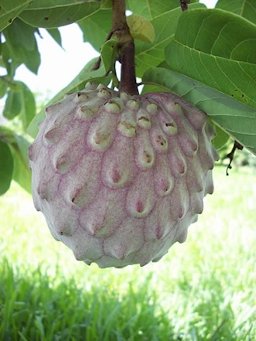 Fig. 1 Annona diversifolia 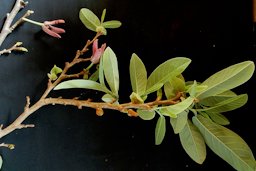 Fig. 2   Fig. 3 Ilama flower 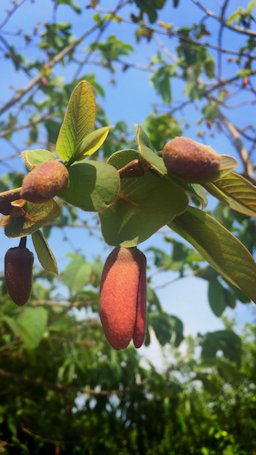 Fig. 4  Ilama A. macroprophyllata, Chiapas, México 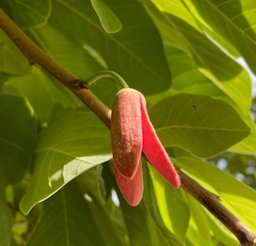 Fig. 5  Chiapas, México  Fig. 6 Diversifolia means diverse leaves, different shapes 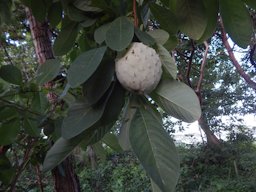 Fig. 7  Ilama, Mexico 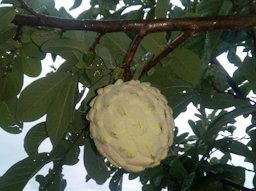 Fig. 8  Ilama A. macroprophyllata, Guerrero, Mexico 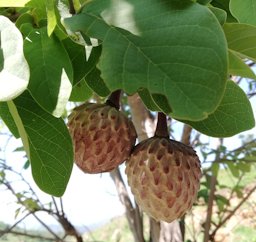 Fig. 9  Red ilama, Juárez, Mich., México. 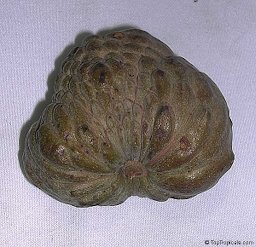 Fig. 10 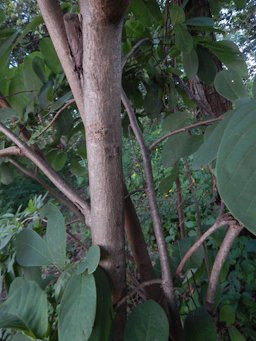 Fig. 11  Ilama A. macroprophyllata, Mexico 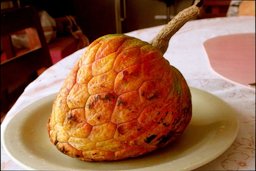 Fig. 12 Ilama madura lista para comer Ripe ilama ready to eat |
Scientific
name Annona macroprophyllata Donn. Sm. Pronunciation an-nona di-ver-si-fo-lia Common names English: ilama; Mexico: ilama, izlama, illamatzopotl (translated as zapote de las viejas, or "old woman's sapote"), hilama, and papuasa; Guatemala: blanca or papauce; in El Salvador, anona blanca 1 Synonyms A. diversifolia Safford Relatives Sugar apple (A. squamosa), cherimoya (A. cherimola), soursop (A. muricata), custard apple (A. reticulata), pond apple (A. glabra), atemoya (Annona cherimola x A. squamosa) Family Annonaceae (annona family) Origin Indigenous in the mountains and foothills of southwestern Mexico, Guatemala, and Salvador Uses Food Height 25 ft (7.5 m) Plant habit Erect or spreading Trunk/bark/branches Often branching from the ground; aromatic, pale brownish-gray, furrowed bark 1 Leaves Deciduous; glossy; thin, elliptic to obovate or oblanceolate; 2-6 in (5-15 cm) long 1 Flower Solitary; long stalked; maroon Fruit Conical, heart-shaped or ovoid globose; 6in. (15 cm), weighing as much as 2 pounds Season July to Dec. 1 Light requirement Young trees need partial shade; older trees prefer full sun Soil tolerances In Florida it performs better on deep sand than on oolitic limestone 1 pH preference 7-8, tolerating 5.8-8.4 7 Cold tolerance 30-32 °F (-1-0 °C) most cold sensitive of the Annonas Invasive potential * None reported Pest resistance Not as susceptible to the chalcid fly as are its more popular relatives in Florida 1 Known hazard None known Reading Material Annona diversifolia, Neglected Crops The Annona diversifolia, Archives of the Rare Fruit Council of Australia Ilama, Fruits of Warm Climates The Ilama, Manual Of Tropical And Subtropical Fruits Taxonomic Swap Annona diversifolia replaced with Annona macroprophyllata. Committed 5 Apr. 2020. 6 Note: This member of the Annonaceae was little known and the subject of much confusion until 1911, when it was investigated and fully described by W. E. Safford, of the United States Department of Agriculture's Bureau of Plant Industry, and given the botanical name of Annona diversifolia Safford. 1 Origin Indigenous in the mountains and foothills of southwestern Mexico, Guatemala, and Salvador. Description The ilama may be termed the cherimoya of the lowlands. The cherimoya does not succeed in the tropics unless grown at elevations of 4000 to 6000 feet, where the climate is cool. The ilama, on the other hand, belongs to the lowlands, but is strikingly similar in character to a good cherimoya. It is a valuable recruit and one which cannot be too strongly recommended for cultivation throughout the tropics. 5 The ilama is highly regarded in its Central American homeland and is grown on a limited basis in south Florida. The thick rind reportedly limits attacks by the chalcid wasp- the bane of Annona growers in south Florida. 8 Leaves A. diversifolia is distinguished from other species of Annona in that it has two classes of leaf: the usual obovate, glabrous leaves with a petiole; and leaves in the form of round, deciduous bracts without a petiole, which grow on the base of the small branches (Fig. 6). The undersides of the leaves, small branches and fruit have a powdery, whitish appearance, which is more noticeable in the white-fleshed varieties. 2 Young leaves are reddish/purple (Fig. 6). Flowers The flowers have three outer petals that are 2 to 5 cm long, and three minute inner petals; the color is a varietal characteristic and ranges from pink to purplish red. 2 The inner petals are pollenbearing. In Florida, the ilama flowers in July. Fruit Generally, the fruit is studded with more or less pronounced, triangular protuberances, though fruits on the same tree may vary from rough to fairly smooth. The rind, pale-green to deep-pink or purplish, is coated with a dense, velvety gray-white bloom. It is about ¼ in (6 mm) thick, leathery, fairly soft and granular. In green types, the flesh is white and sweet; in the pink types, it is pink-tinged near the rind and around the seeds, all-pink or even deep-rose, and tart in flavor. It is somewhat fibrous but smooth and custardy near the rind; varies from dryish to fairly juicy, and contains 25 to 80 hard, smooth, brown, cylindrical seeds, 3/4 in (2 cm) long, 3/8 in (1 cm) wide, each enclosed in a close-fitting membrane easily slipped off when split. 1 Varieties 'Fairchild', 'Rosendo Pérez', 'Guillermo' and 'Gramajo' have a thick-skinned, greyish green fruit with prominent round areoles and pink flesh. 'Rosendo Peréz' and 'Gramajo' have big fruit. (These cultivars have been bred for Florida.) 2 Harvesting Traditionally, the fruits are not picked until they have begun to crack open, but they can be picked a little earlier and held up to 3 days to soften. They will not ripen if harvested too early. 1 Propagation Ilama seeds, taken from ripe fruits, remain dormant for several weeks or even months and the germination rate thereafter is low. Applications of gibberellic acid at 350 ppm greatly increases germination. Higher concentrations cause malformations in the seedlings. Whip-or cleft-grafting onto custard apple (A. reticulata) rootstocks has been successful. Seedlings begin to bear when 3 to 5 years old. 1
Grafting Annonas in Southern Florida, Hort Science pdf Pests The Ilama is not as susceptible to the chalcid fly as are its more popular relatives in Florida. The fruit is very resistant and sometimes completely immune to attack from seed-boring insects. 2 Food Uses The ilama fruit is either eaten on the half-shell or scooped out with a tool. The Ilama is usually chilled when served. It is sometimes served with a little cream and sugar to intensify the flavor, or with a drop of lime. 3 General Mr. Har Mahdeem, popular horticultural circuit speaker and authority on Annonaceae says the best conditions to produce one of the best fruit in the annonacea family, the Ilama, requires hot and dry summer followed in late July-August by a rainy period. Conditions, he says, rarely seen in South Florida. He recommended, should we try to grow one, grafted varieties on pond apple rootstock: 'Guillermo', 'Fairchild', 'Genova Red', 'Genova White' and 'Pajapita'. On propagation, he recommended cleaning the seeds and storing them at room temperature, dry condition, for 9-10 months. The rate of success is very much increased. Tip: Scratch the bark of a limb; if it is red, you will have a pink fleshed Ilama, if green, it will be a white variety. Also, if the new growth is red, it will be a pink fleshed variety. Mr. Mahdeem says the fruit is not fully ripe until it cracks open on the tree. Left on a counter, it will reseal itself and that is how they are sold at market. Other Edibles in the Annona genus: Atemoya (A. squamosa x A. cherimola) Biriba (Rollinia mucosa, A. mucosa) Cherimoya (A. cherimola) Custard Apple (A. reticulata) Mountain Soursop (A. montana) Pond Apple (A. glabra) Poshte (A. scleroderma) Soursop (A. muricata) Sugar apple (A. squamosa) List of Growers and Vendors |
||
| Bibliography 1 Fruits of Warm Climates. Julia F. Morton, Miami, 1987. 2 Mahdeem, H. "Custard Apples." Neglected crops: 1492 from a different perspective, FAO Plant Production and Protection Series, no. 26. Food and Agriculture Organization of the United Nations, 1994, FAO, fao.org. Accessed 26 Dec. 2015. 3 "Annona diversifolia." Wikipedia, wikipedia.org. Accessed 3 Jan. 2015. 4 "Annona diversifolia." Top Tropicals, toptropicals.com. Accessed 11 Mar. 2015. 5 Popenoe, Wilson. Manual Of Tropical And Subtropical Fruits. 1920, London, Hafner Press, 1974. 6 "Annona macroprophyllata Donn.Sm." Plants of the World Online, Facilitated by the Royal Botanic Gardens, POWO, (CC BY 3.0), www.plantsoftheworldonline.org/taxon/urn:lsid:ipni.org:names:14297-2. Accessed 13 Aug. 2021. 7 "Annona diversifolia." Ecocrop, Useful Tropical Plants Database, 30, July 2021, (CC BY-NC-SA 3.0), tropical.theferns.info/viewtropical.php?id=Annona+diversifolia. Accessed 13 Aug. 2021. 8 Boning, Charles R. Florida's Best Fruiting Plants- Native and Exotic Trees, Shrubs, and Vines. Sarasota, Pineapple Press, 2006. Videos v1 "How to Graft Annona Fruit Trees Using Cleft Graft - Grafting Dream Cherimoya, Atemoya, etc." Sulcata Grove, 26 Feb. 2017, www.youtube.com/watch?v=1_Xy-rZQmdg. Accessed 23 July 2021. Photographs Fig. 1 Bronson, Eric. "Ilama." I likE plants!, 2009, Wikipedia, wikipedia.org. Accessed 15 Dec. 2014. Fig. 2,6,10 "Annona macroprophyllata Donn.Sm." Plants of the World Online, Facilitated by the Royal Botanic Gardens, POWO, (CC BY 3.0), www.plantsoftheworldonline.org/taxon/urn:lsid:ipni.org:names:14297-2. Accessed 13 Aug. 2021. Fig. 3 "Annona diversifolia." Top Tropicals, toptropicals.com. Accessed 3 Jan. 2015. Fig. 4 Vera, Daniel Pineda. "Ilama Annona macroprophyllata, Chiapas, México." iNaturalist, Research Grade, 23 May 2018, (CC BY 4.0), www.inaturalist.org/observations/12754591. Accessed 13 Aug. 2021. Fig. 5 Vásquez, Natividad Santiago. "Ilama Annona macroprophyllata, Chiapas, México." iNaturalist, Research Grade, 6 July 2021, (CC BY 4.0), Image cropped, www.inaturalist.org/observations/85992570. Accessed 13 Aug. 2021. Fig. 7,11 Rivera, Luis Humberto Vicente. "Ilama Annona macroprophyllata, Mexico." iNaturalist, Research Grade, 3 Aug. 2020, (CC BY 4.0), www.inaturalist.org/observations/55249540. Accessed 13 Aug. 2021. Fig. 8 Fresnares, Oswaldo. "Ilama Annona macroprophyllata, Guerrero, Mexico." iNaturalist, Research Grade, 30 Aug. 2017, (CC BY 4.0), Image cropped, www.inaturalist.org/observations/7720827. Accessed 13 Aug. 2021. Fig. 9 wendy_ma. "Ilama Annona macroprophyllata, Juárez, Mich., México." iNaturalist, Research Grade, 1 Dec. 2019, (CC BY 4.0), Image cropped, www.inaturalist.org/observations/36277991. Accessed 13 Aug. 2021. Fig. 12 miller, Edgar p. "Ilama madura lista para comer." Wikimedia Commons, 4 Mar. 2017, (CC BY-SA 4.0), commons.wikimedia.org/wiki/File:IlamaSTB_6438.jpg. Accessed 13 Aug. 2021. * UF/IFAS Assessment of Non-native Plants in Florida's Natural Areas Published 15 Dec. 2014 LR. Last update 27 Aug. 2021 LR |
|||